The Conan Setting
The world of Conan is a simplistic ‘underlay’ of Europe, Africa and Asia. Howard not only avoided tedious world building on one hand and the research required to do historical fiction on the other, but also adapted a common mythology and social sensibilities in one low-commitment stroke. The story Victoria and I are examining here is set on what would be the Eastern Atlantic Coast from Portugal down to the Congo.
The aspect of the Conan setting that is most telling is that it—along with Howard’s other fantasy settings—is largely a metaphor for his own time, The Great Depression. Howard wrote the bulk of his work after the Stock Market Crash and before the country began recovering from its effects. In Howard’s fantasy there is nothing good about nobility, royalty or wealth. Howard looked out upon a nation that had been raped by politicians, bankers and corporate leaders, from a portion of the country where Old West pioneers still lived on out of a seemingly forgotten age.
Kings, princes and nobles in Conan and Kull stories are weak and corrupt reflections of Howard’s contempt for politicians of his own time. The sorcerers of Howard’s fantasy, raising, ruling and bringing low nations from behind the scenes, reflect Howard’s hatred of bankers and stock market jockeys. In many of the Conan stories set in civilized settings, Conan is essentially a Jeremiah Johnson type mountain man character lost in 1930s New York City.
The Conan Character
The Conan character is essentially Howard’s ideal primal American. Conan is not a universal protagonist, being too selfish and dismissive of authority to have much appeal to European sensibilities. The closest example of another leading male character from the same period is Tarzan. Tarzan reflected the duality of masculine psychology of the period; the obsession with class status on one hand and the self-knowledge that the modern man was in many ways less than his predecessor. Edgar Rice Burroughs built a superman by taking a Brit of noble blood and incubating him in a savage setting. Part of Tarzan appealed to everyone. Conan was and remains too bitter and lawless for the average American to stomach given our societies latent yearning for a British style monarchial figure to worship. This is why, I believe, Conan has had such a singular appeal to a certain slice of the American male fiction market—he’s the original politically incorrect antisocial commentator, a commentator whose acts vastly outweigh and support his words.
Howard’s superman is a reactionary frontiersman. Some of Howard’s Conan stories were obviously converted westerns and pirate yarns. The glaring parallel with Queen of the Black Coast, published in May 1934, was with the career of Bonnie and Clyde who were killed not far from Howard’s home state in May of 1934. Conan as a character exhibits an elemental hatred for the corrupt institutions of the state, landed gentry, and wealthy political and corporate class.
The reader should keep in mind that all of the Conan stories after the first one: Phoenix on the Sword, are essentially back-story for a regicide. The first Conan story begins with a palace coup attempt against King Conan, a usurper who strangled his sniveling predecessor on the throne, and successfully defends his throne with an antique axe yanked from the palace wall. The Story Victoria and I are looking at here is perhaps the most crucial tale in the young Conan’s life. This story is the incubus of his haunting, and the beginning of his reputation among men.
Howard admitted in his own letters that Conan was a composite of oil-town roughnecks, brawlers, boxers and loners he had known. Conan is one man’s ideal, elemental, unapologetic, authority-hating, unilaterally-insensitive American man. How does he stack up to other super-male characters of legend and fiction?
Achilles would envy him for his invulnerability to the demands made upon him by weaker men higher on the social ladder.
Beowulf would think him rude and disrespectful of gods and men.
Author would fear him and Lancelot hate him.
Tarzan would find his complete lack of tact endearing and probably attempt to mentor him, largely in an attempt to cure Conan’s alcoholism.
Superman would see in Conan his polar opposite, a moral—not just mortal—enemy more deeply at odds with him than any villain.
Howard was a Depression Era author of horror stores and adventure yarns. Conan is his idea of a medieval American.
Victoria is taking her first read of Howard. As she is familiar with the movie franchise—as will be most the readers—but not the literature, she is taking the lead on the review and handing off to me.
Her Take
FAITHFUL HANDY MAN
Robert Howard’s QUEEN OF THE BLACK COAST, reviewed by V.J. WAKS
A chatty, multi-tasking determined female–a superman that grunts–is this a comment on modern life in the making?
No; it’s the relationship between Belit the Queen of the Black Coast pirates–and Conan, the Cimmerian.
What strikes one at the onset is not just the scenic graphics, the over the top physical maleness of the Conan character. It’s how that character meshes with the female lead. She is the sexual aggressor; considering the date, 1934, and the works of the man that precede this story this is an aggressive stance to take in a story. Belit is a woman who knows what she wants and is not afraid to take it; a remarkable twist in female protagonists, enough to make a reader sit up and take notice.
Like the Valeria of the first of the CONAN films, Belit is indeed head-strong, and strong, period. She is a born leader; smart, as manipulative as any man and wise beyond her few years. She, like Valeria, is also the brains behind the plan to plunder a mythical, haunted kingdom whose remote location and reputation simultaneously invite obsessive interest and hide a dark secret. Belit and her composite Valeria are the sophisticated planners in the Conan relationships–dare I also suggest they are sexually as well?
Clearly, a great deal of the way the story was laid out and the manner in which the characters are depicted was perfect for the provocative scenarios in the leading medium of the day—the pulps. White skinned warrior maiden among her black skinned male warriors and enough local colour to defy description; easy to see the attraction. Howard uses colour to his purpose; he is wantonly descriptive and yet leaves a bit unsaid, knowing that the reader will fill in whatever the heart needs for the story.
The whole piece is intensely sensual; we can smell the stagnation of the water as Belit’s corsair leaves the clean, sea coast–itself the epitome of pure, uncorrupted strength, life force and more impacting–natural balance. They enter a land that is savagely wrong, more than just a dark, disturbing twist on fantasy settings. They seek a place that is viciously corrupt, and still actively ruled by a dark, blood-hungry ancient power. And so it is; and so it waits for them. By the time they land at a wharf whose glory days predate known human civilization, by the time we see the minarets and ramparts of a city whose heart has been torn from it alive, a city haunted and still possessed by a demonic force–we are ready for some major undertakings in the horror/warfare genres. The editing is specific and tight; these stories were often released in sections over months of time and Howard is read-worthy in his pacing.
James informs me that this story is atypical for Howard; his is the greater expertise in the literary works of this writer so he is best situated to discuss the placement and significance of ‘Queen’ in the series. I have seen most of the CONAN films, which my partner has not. The fact that Belit is referred to as Queen is notable; clearly Howard meant this character to stand out in relation to the man beside her as well as the other female characters he would present in other stories.
Frankly, I was mesmerized by it. With all the redundancies of language in Howard’s style, aside from his now politically incorrect (yet still bankable) take on male/female physiognomy and attitude verisimilitudes, despite the cloud of testosterone that punches one back four paces and a display of muscle and sword play ramped up to the level of infinity–it was hard to put it down. By the fifth or sixth reference of ‘lithe’ in reference to the female form, I felt sure I would break out in hives. Yet I still had trouble looking away.
The man has chops as a writer, as a storyteller. It becomes apparent that Howard is torn between his obvious enjoyment of parody of such male/female warrior tropes–and his earnestly wishing somehow that they might be true. Schwarzenegger’s Conan needed a stronger script, a deeper and more daring vision, a better actor before this character could grow into the King, wise and terrible–and lonely perhaps–that one scene in the first film shows on his throne. Subsequent films have ventured closer to a darkness and depth that is more in line with modern expectations. Yet, what we have in Howard’s character is a glimpse of the possibilities, of what might have been. We see in Conan the allusion to another author’s hero, another character’s journey in a franchise equally potent, equally influential, as he will mature across the years. In this other creation, we will see a character that is also simple, yet without a shred of rusticity; we will find a man whose silences speak volumes in comparison to the foolish chatter of most of the men around him. In Conan, we see a hero as steadfast, as stoic, as formidable as Tarzan–as the latter will eventually mature through a much longer and more terrible arc–two world wars and the dangerous greed and unavoidable expansion of a soon to be rampant industrial age. There is significant commentary and criticism of the world in both the Conan and Tarzan series; we would do well to see how those visions stand up against our own.
How do they compare to now?
My take is that here is a look back in time; a time capsule in some ways.
We have the modern franchises in film to compare with the original. We can wonder at how far we have, or haven’t come as far as the mental and sexual maturity of readers, writers–and producers–is concerned. Yet here on the page is evidence of a simpler time, a simpler way of writing, a formula for romance if you will that is not to everyone’s taste but is still prevalent and potent enough to find resonance and very lucrative expression in the games, films and writing of this current day. One has only to look at the billboards for this season’s holiday movies to see the footprint in time: both Superman and Thor sport red cloaks—just like Conan.
That’s one hell of a long way to extend one’s literary influence, to my mind.
The story ends the way it must. There is poignancy in the dénouement that lingers. At the end what Conan misses is the best part of Belit, the best part of many modern women–a partner, a strong, smart, exceptional person, physically adept and sexually mature, if not downright assertive. This is the heroine that Conan longs for–was it also the heroine that the story’s creator longed for as well? Conan might have been the hero I wonder about, too, after a hard day at work, after yet one more look at the daily news. Like the quatrains of a long lost love poem, like a strain of music darkly and passionately unforgettable, what remains after one turns the last page is something indefinable, something that tugs insistently at this writer’s mind, something that somehow ignites some forgotten embers in this very modern woman’s heart.
His Take
‘His take’ is broken into five parts, mining the contents of each of the five chapters in this novelette for the substrata, in particular the nature of the Conan character and the importance of Belit to the mythic barbarian and Howard’s awful view of life.
‘The Wildest She-devil Unhanged’
The story of Conan and the pirate queen begins with a look at ‘civilized’ life from the perspective of an honorable savage. Conan forces his way onboard an outgoing merchant galley one step ahead of the corrupt law. He befriends the captain and tries to defend the small ship against the ‘Tigress’ a predatory war galley commanded by Belit. Belit is a pirate queen that is ethnically supposed to be of a pre-Berber tribe, who commands black pirates who worship her ‘like a goddess’.
The interesting thing here as that, when the Arab-Islamic invaders swept across North Africa the staunchest resistance they encountered came from Berber tribes who were ruled by a warrior queen. I would bet that Belit is a composite of that Berber queen, a Chinese pirate queen of the 19th Century, and Bonnie the psychopath gangster of Howard’s own time. Howard’s treatment of race is often overlooked, and he is assumed to have harbored a typically negative view of blacks for a man of his time, race and locality. He is also widely assumed to have been misogynistic as well. A nice example that refutes both prejudices comes in the following line, “…she knew she had found her lover, and his race meant naught…”
It is significant that Belit is the only love of Conan’s 25 story career, and that Howard was a bachelor who is thought to have only loved one woman. Conan has no qualms about helping Belit with her anarchist crusade against the entrenched powers of the age. In case you were impressed or horrified by the 1970s film Excalibur, when Euther committed the sexist crime of armored intercourse, Chapter One closes with Conan doing the same, but with considerably more encouragement from the lady beneath him.
‘Dark Jеwels Burning in the Moonlight’
For the time period of its composition Queen of the Black Coast is absolutely scandalous: a naked mixed-race woman leading a crew of black pirates, and, more troubling, directing a white man! Howard states that ‘hers was the mind that directed’ and ‘his the arm’ that carried out the directions. This had to be written as fantasy—could have never been released as a historical or oriental adventure.
As Belit rashly looks for a city to sack up a poisonous river of death, she engages Conan in a discussion as to his religious beliefs and superstitions, revealing herself to be something of a crazed witch. Much of Conan’s cultural back-story is fleshed out in this conversation. At this point Howard is at his horrific best where the setting is concerned, and Belit is beginning to let her powerful relationship with Conan go to her head. She is clearly intoxicated by how their strengths complement one another and decides to take on the darkest corner of Howard’s lurid world, even as Conan professes his fatalism. This is Bonnie and Clyde in a world of horrific shadow.
‘Then Curst the Dream that Bought My Sluggish Life’
Howard’s generation of writers were obsessed with ancient horrors and undiscovered mysteries. Rather than have some learned character reading ancient symbols to narrate the nature and fate of the civilization that had built the city that Conan and his savage bride were plundering, Howard uses toxic plants to drug Conan into a nightmare that reveals for the reader what horrors Belit has led them into. As often happens with Conan he is befuddled by sorcery and must find some simplistic direct means to combat its effects. This recurrent theme was a favorite of Howard’s, reflecting, I think, a fitting sentiment for a rural writer to hold concerning a world that has just been duped and plundered by a coven of bankers.
‘Fiercer than Death’s Black Spell’
Chapter 4 is a classic berserk scene as Conan battles the ‘oldest race on earth’ and extinguishes it only through the inspiration of his mate. This was just about the only scene in the original Conan movie by John Milus that actually came from a Howard story. It also shows how personal Howard’s stories were. The Conan franchise has been squandered in film largely because the movie makers refuse to present the character in the stories he was crafted in. Howard did not write ‘save the world stories’. Howard wrote about individuals in an unjust and uncaring world striving against the odds. In that sense his work was far less ‘fantastical’ than most of what is written and filmed under the banner of science-fiction. The public will never be able to enjoy Conan in his natural setting except in print. Hollywood cannot abide an action hero that does not save the world.
‘Rose and Gold’
The most iconic aspect of Conan as a character is that he either begins a story alone or ends it alone. In Queen of the Black Coast Conan only finds companionship—rare for him in his life—when the world seems to be burning and his lady is lighting the torch. He begins the story on the run and ends it wandering and alone. In Howard’s mind this was about as much as a real man of action could hope for, to not sell out and remain the man that the one woman who loved him had fallen for. In most fiction the writer metaphorically castrates the male hero by having him buckle under the weight of society, facilitating a ‘happily-ever-after’ ending. Howard’s Conan is more like a serial killer with a code that turns his back on the world after every angry spasm of interaction.
If you’ve just seen the movies try this.


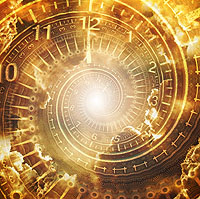
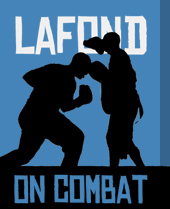

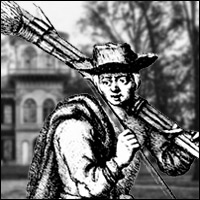
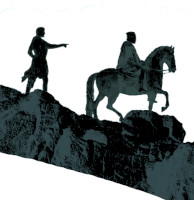
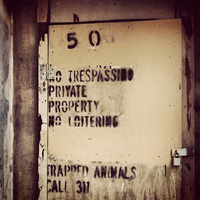
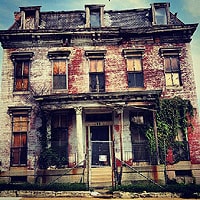


How much Conan is there in the Mad Max character?
I'm not thinking a lot.
This is why. The vengeful loner aspect of the Mad Max character is based on the killing of his family in the first of the three movies. This is a universal hero that shows up in many cultures, indeed most modern cultures, even those as diverse as Japanese and American. Also Max does not have that top 1% testosterone level that Conan has. He is more of a purely psychological force.
Unlike the Conan movies, the Conan of Howard has no over-arching vengeance theme motivating his actions. He is a barbarian interloper that preys on and negatively comments on civilized society, thereby discrediting it. Imagine an Anarchist-Libertarian with about as much respect for the 'non-aggression principal' as Shaka Zulu. Take away the Viking trappings and Conan is half mountain man, half gangster.